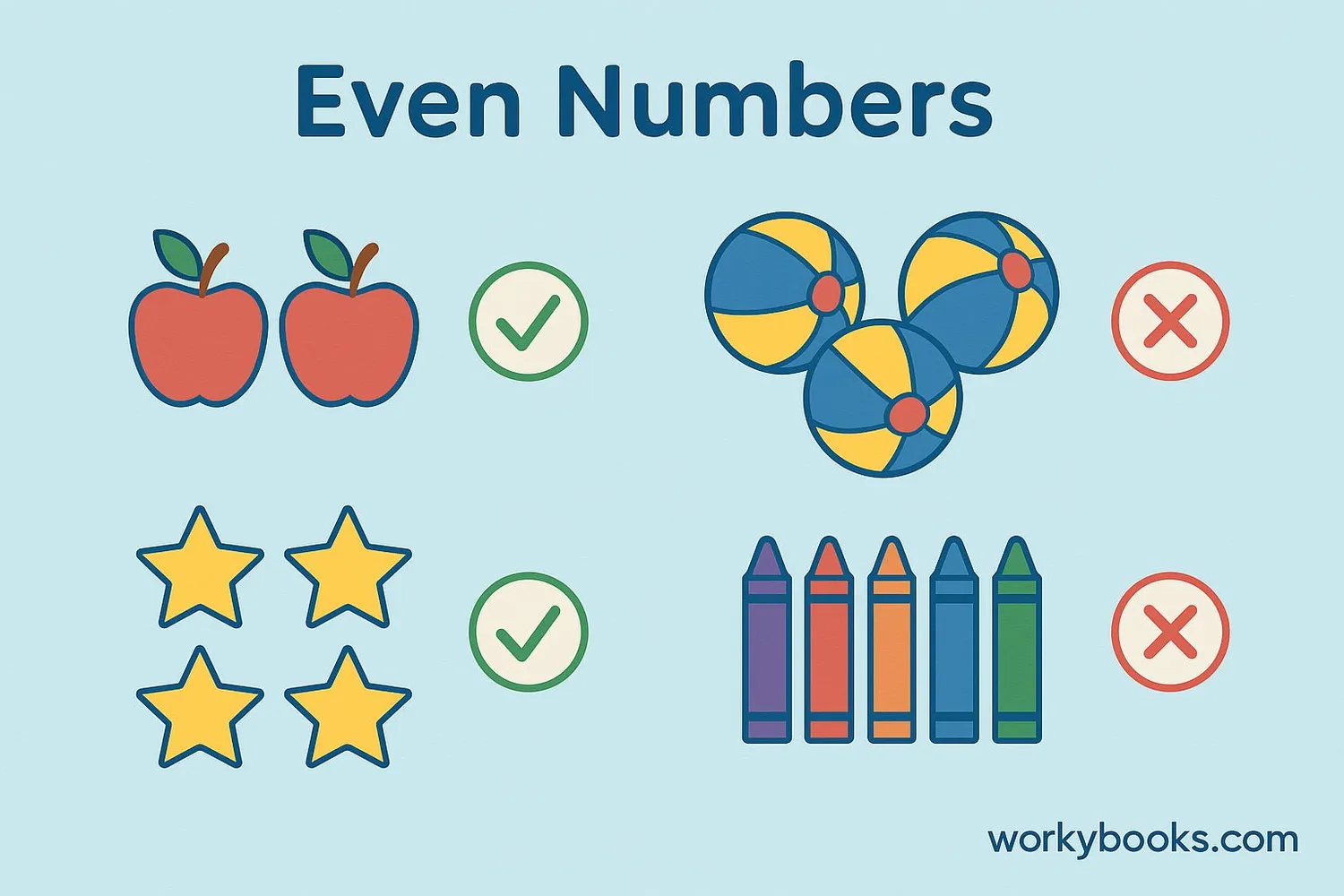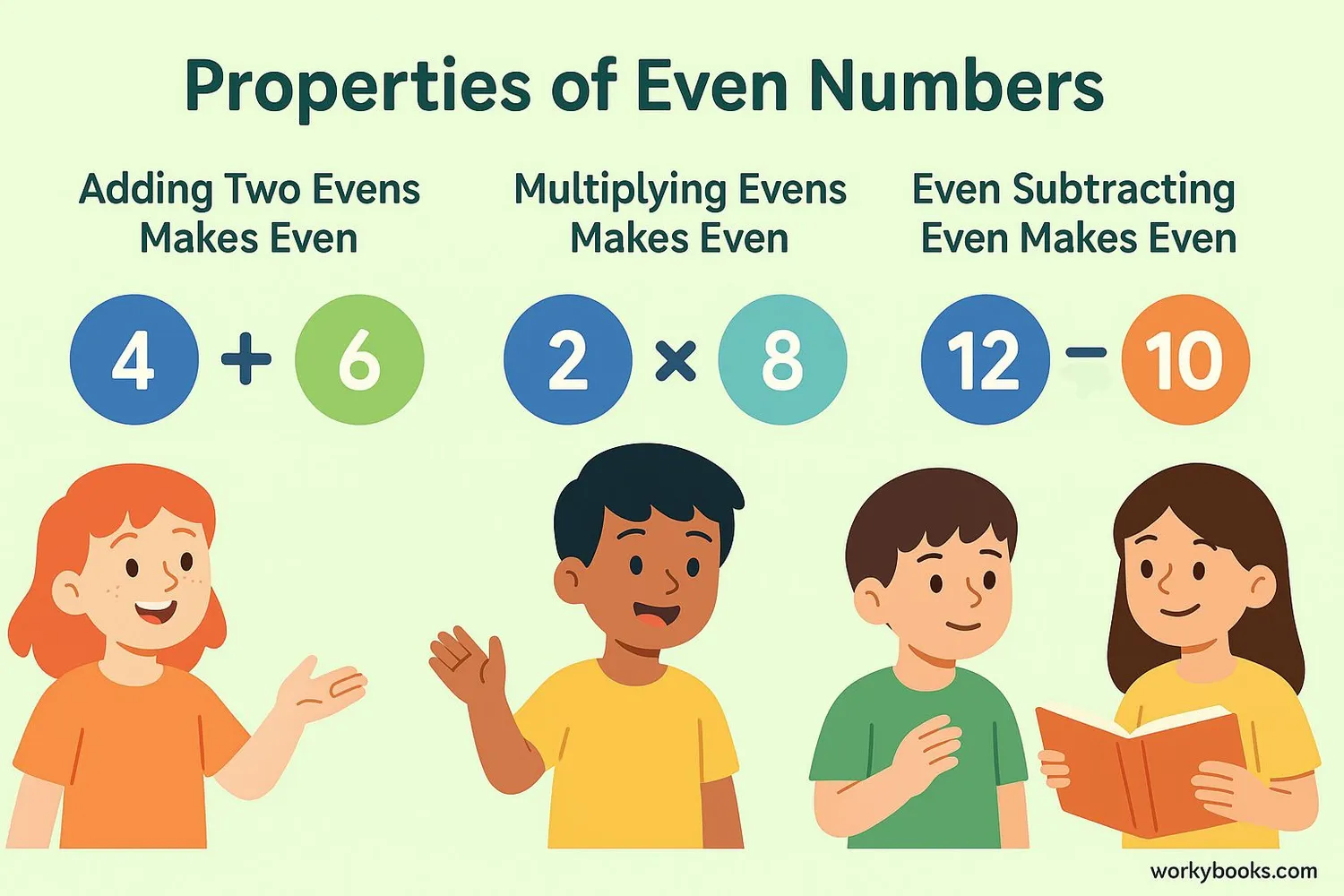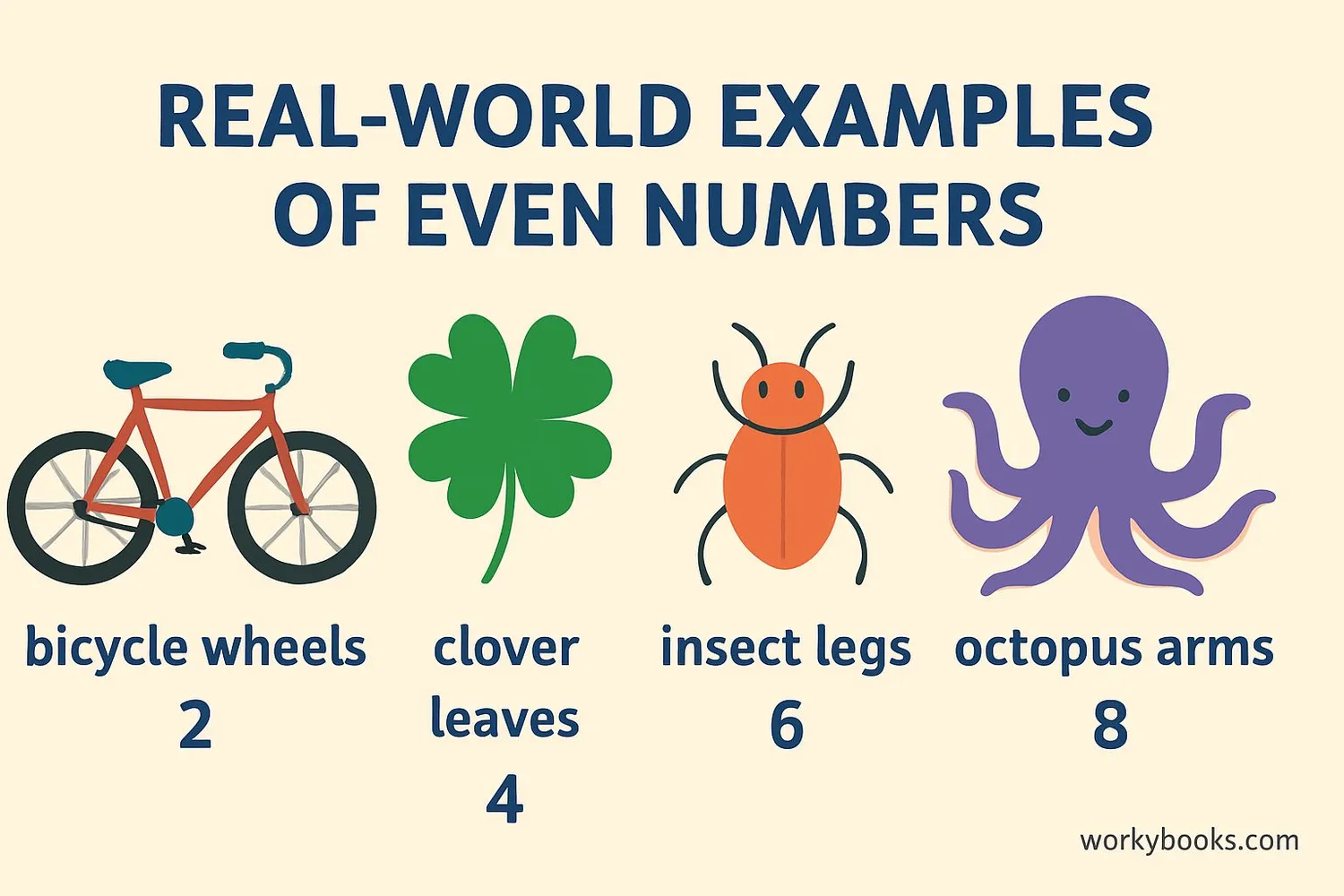Even Numbers - Definition, Examples, Quiz, FAQ, Trivia
Learn about even numbers with simple explanations, examples, and practice activities
What Are Even Numbers?

Even numbers are whole numbers that can be divided exactly by 2. When you divide an even number by 2, there's no remainder.
Numbers like 2, 4, 6, 8, and 10 are even because:
• 2 ÷ 2 = 1 with 0 remainder
• 4 ÷ 2 = 2 with 0 remainder
• And so on...
The smallest positive even number is 2. Zero (0) is also considered an even number because 0 ÷ 2 = 0 with no remainder.
Key Concept
Even numbers always end with 0, 2, 4, 6, or 8 in the ones place. This pattern helps you quickly identify them.
Properties of Even Numbers

Even numbers have special properties that make them interesting:
Addition:
• Even + Even = Even (2 + 4 = 6)
• Even + Odd = Odd (2 + 3 = 5)
Subtraction:
• Even - Even = Even (6 - 2 = 4)
• Even - Odd = Odd (6 - 3 = 3)
Multiplication:
• Even × Even = Even (2 × 4 = 8)
• Even × Odd = Even (2 × 3 = 6)
Division:
• Even ÷ Even = Could be whole or not (4 ÷ 2 = 2, but 6 ÷ 4 = 1.5)
General Form of Even Numbers
Where n is any whole number (0, 1, 2, 3, ...). This formula helps generate any even number.
Remember
2 is the only even prime number because it has exactly two factors (1 and itself) and is divisible by 2.
Even Number Examples

Let's look at examples of even numbers in different contexts:
Number Line:
• Pairs of shoes (2, 4, 6, etc.)
• Eggs in a carton (usually 6 or 12)
• Number of sides on a hexagon (6)
• Days in a fortnight (14)
Even Numbers Between 1-100:
0, 2, 4, 6, 8, 10, 12, 14, 16, 18, 20, ..., 100
Notice how all these numbers end with 0, 2, 4, 6, or 8? That's the pattern of even numbers!
Practice Tip
To find if a large number is even, just look at its last digit. If it's 0, 2, 4, 6, or 8, the number is even!
Even Numbers Practice Quiz
Test your understanding with this 5-question quiz. Choose the correct answer for each question.
Frequently Asked Questions
Here are answers to common questions about even numbers:
Number Trivia
Discover interesting facts about numbers:
Ancient Number Systems
The concept of even and odd numbers dates back to ancient Greece. Pythagoras and his followers considered even numbers feminine and odd numbers masculine, attributing special meanings to them.
Nature's Patterns
Many patterns in nature involve even numbers. Bees build hexagonal honeycombs (6 sides), snowflakes often have 6-fold symmetry, and many flowers have petals in even numbers (2, 4, 6, etc.).
Mathematical Properties
The sum of the first n even numbers is always n × (n + 1). For example, the first 3 even numbers (2+4+6) equal 12, which is 3 × (3+1). This pattern continues for all counting numbers!
Largest Known Even Number
Mathematicians are always discovering larger numbers. The largest known even number is constantly changing as computers calculate larger values, but all even numbers follow the same simple rules!





